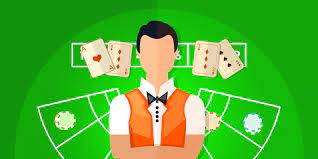Baccarat is a card game of probability between the banker and the player, and the principal objective of the game is to guess whose hand, the banker’s or the player’s, will be closest to the value of nine, or you may just bet on who is the winner. Though these are the most probable baccarat rules, there are some variant rules that might vary depending on the casino.
In some casinos, the dealer might provide the shoe with an extra hand for a few examples of the possible rulings during the game. Of course in this case, the cards dealt to the players and the banker are not shared, and the baccarat game continues as usual.
Superstitions Have No Place In Baccarat
It is not unusual to find that superstitions have no place in baccarat. For example, before the cards are dealt, the dealer might sound an air of mystery to the players as to what the next card might be. But then again, it could be the very next card that could determine the winner.
Imagine, in the shoe, there are, say, 10 diamonds. And, in each suit, you have the flush with those tens, so that you have a total of 15 outs. On the other hand, the banker has just dealt the card, which doesn’t change anything. If you have the ten diamonds in the suite of diamonds, and the banker shows a lower-value card, then the banker has to have a pair of tens to match your bet. The probability that you will get a card that matches is the same as the probability that you will get the ten diamonds; 2 to 1.
But probably most people are more interested in the possible ways that the game can be won. And because MPO777 is typically a game that can be played for tips along with entertainment, the possibility of being able to influence the outcome is really what draws people in. Maybe, just maybe, if you believe in the possibility you can influence the outcome; even if it’s just by wagering or hoping.
Even though the banker has no control over the outcome, the play does, too. In this case, the dealer has to look at the card the player is showing and maybe bending down to count the numbers of the card (i.e., the number of picture cards minus the number of the ten and the ace). This number is very important, because it indicates what the player has and what the dealer has. The dealer has to keep a running count of the cards, and the player has to keep track of the running count. The dealer counts the cards to determine how much the player has bet and then deals the cards.
The cards are then shuffled, looked at, and the running count is calculated. If the true count is positive, the player has won. If it is negative, the player has lost. When the cards are distributed, the player keeps a running sum of the cards. If the sum is a positive one, the player benefits. If it is negative, the player loses. The more a player has won, the more the player benefits. The idea is that the sum should go down to zero when the player wins.
However, there are also strategies that the player could use to increase the probability of winning. The most widely-used of these strategies is what is called the Martingale strategy. With the Martingale strategy, the player doubles the bets after every loss. This essentially puts the player at risk of losing the entire game cycle! But this strategy is very risky and requires the player to have a large amount of wealth to be able to make the initial bet.
There are also a number of other strategies that can be used. The Fibonacci strategy is very popular among players. With this strategy, the player starts off by betting one unit. If the bet is lost, the player then bets two units, and so on. There is a possibility of losing the entire bet cycle at any point in the betting sequence.
The Kelly Criterion is then employed in this system to take out the risk of possible losing streaks. The idea is to increase the bets when you win and decrease the bets when you lose. The Fibonacci strategy is then applied to determine the best strategy for increasing the bets. This means that the player needs to bet with a strategy, not a random one.
With the Kelly Criterion employed, the player can be sure that the odds are in his or her favor. This is because the odds will have to be high enough to overcome the house advantage. The game cycle can then be concluded as the player has gone on the roll, or has gone the table. The Fibonacci strategy requires that the bets be increased after every loss.
